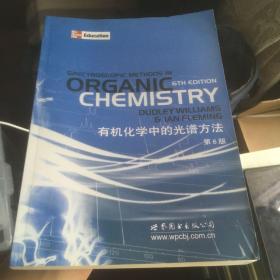
有机化学中的光谱方法(第6版)
¥ 12.82 2.2折 ¥ 59 九品
仅1件
上海徐汇
认证卖家担保交易快速发货售后保障
作者[英]威廉姆斯 著
出版社世界图书出版公司
出版时间2009-05
版次1
装帧平装
货号物理2
上书时间2022-09-05
- 最新上架
商品详情
- 品相描述:九品
图书标准信息
- 作者 [英]威廉姆斯 著
- 出版社 世界图书出版公司
- 出版时间 2009-05
- 版次 1
- ISBN 9787510004506
- 定价 59.00元
- 装帧 平装
- 开本 16开
- 纸张 胶版纸
- 页数 291页
- 正文语种 英语
- 【内容简介】
-
《有机化学中的光谱方法(第6版)》是一本由英国剑桥大学D.H.Williams和I.Fleming合著的有机化学光谱方法经典教材。第1版出版于1966年,《有机化学中的光谱方法(第6版)》为第6版。书中讲述了近年来迅猛发展的二维核磁共振(如Tocsy、远‘H-13CCOSY)、MALDI、FT-ICR、TOF等新技术。与时俱进,本版较前版在内容上做了较大的改动,有关UV和IR光谱的部分讲述的更加准确;丰富了关于NMR的内容;介绍MS的部分更加讲求结合实际。全书共分为五章,第1章为紫外和可见光谱,论述了电子吸收光谱在测定有机基团中的应用;第2章红外光谱,阐述了傅里叶红外和喇曼光谱的样品制备、光谱选律以及各官能团的特征吸收频率;第3章核磁共振波谱,主要介绍了‘H和13C核磁共振的经验参数、各种二维NMR的具体应用;第4章质谱,介绍了各种粒子谱以及气相和液相色谱与质谱的联用;第5章实例和习题,为读者提供了一些选自研究课题、具有启发性的实例,也为读者巩固所学的知识提供了练习。《有机化学中的光谱方法(第6版)》理论和实践并举,因此也适合有机化学工作者做为手册使用。
读者对象:高校化学系师生、有关研究人员。 - 【目录】
-
Preface
Chapter1:Ultravioletandvisiblespectra
1.1Introduction
1.2Chromophores
1.3Theabsorptionlaws
1.4Measurementofthespectrum
1.5Vibrationalfinestructure
1.6Choiceofsolvent
1.7Selectionrulesandintensity
1.8Solventeffects
1.9Searchingforachromophore
1.10Definitions
1.11Conjugateddienes
1.12Polyenes
1.13Polyeneynesandpoly-ynes
1.14Ketonesandaldehydes;π-π*transitions
1.15Ketonesandaldehydes;π-π*transitions
1.16α,β-Unsaturatedacids,esters,nitrilesandamides
1.17Thebenzenering
1.18Substitutedbenzenerings
1.19Polycyclicaromatichydrocarbons
1.20Heteroaromaticcompounds
1.21Quinones
1.22Corroles,chlorinsandporphyrins
1.23Non-conjugatedinteractingchromophores
1.24Theeffectofsterichindrancetocoplanarity
1.25Internet
1.26Bibliography
Chapter2:Infraredspectra
2.1Introduction
2.2Preparationofsamplesandexaminationinaninfraredspectrometer
2.3ExaminationinaRamanspectrometer
2.4Selectionrules
2.5Theinfraredspectrum
2.6Theuseofthetablesofcharacteristicgroupfrequencies
2.7Absorptionfrequenciesofsinglebondstohydrogen3600-2000cm-
2.8Absorptionfrequenciesoftripleandcumulateddoublebonds2300-1930cm-
2.9Absorptionfrequenciesofthedouble-bondregion1900-1500em-1
2.10Groupsabsorbinginthefingerprintregion<1500cm-1
2.11Internet
2.12Bibliography
2.13Correlationcharts
2.14Tablesofdata
Chapter3:Nuclearmagneticresonancespectra
3.1Nuclearspinandresonance
3.2Themeasurementofspectra
3.3Thechemicalshift
3.4Factorsaffectingthechemicalshift
3.4.1Intramolecularfactorsaffectingthechemicalshift
3.4.2Intermolecularfactorsaffectingthechemicalshift
3.5Spin-spincouplingto13C
3.5.113C-2HCoupling
3.5.213C-1HCoupling
3.5.313C-13CCoupling
3.61H-1HVieinalcoupling(3JHH)
3.71H-1HGeminalcoupling(2JHH)
3.81H-1HLong-rangecoupling(4JHHand5JHH)
3.9Deviationsfromfirst-ordercoupling
3.10Themagnitudeof1H-1Hcouplingconstants
3.10.1Vicinalcoupling3JHH
3.10.2Geminalcoupling(2JHH)
3.10.3Long-rangecoupling(4JHHand5JHH)
3.11Linebroadeningandenvironmentalexchange
3.11.1Efficientrelaxation
3.11.2Environmentalexchange
3.12ImprovingtheNMRspectrum
3.12.1Theeffectofchangingthemagneticfield
3.12.2Shiftreagents
3.12.3Solventeffects
3.13Spindecoupling
3.13.1Simplespindecoupling
3.13.2Differencedecoupling
3.14ThenuclearOverhansereffect
3.14.1Origins
3.14.2NOEDifferencespectra
3.15AssignmentofCH3,CH2,CHandquaternarycarbonsin13CNMR
3.16Identifyingspinsystems——1D-TOCSY
3.17Theseparationofchemicalshiftandcouplingontodifferentaxes
3.18Two-dimensionalNMR
3.19COSYspectra
3.20NOESYspectra
3.212D-TOCSYspectra
3.221H-13CCOSYspectra
3.22.1HeteronuclearMultipleQuantumCoherence(HMQC)spectra
3.22.2HeteronuclearMultipleBondConnectivity(HMBC)spectra
3.23Measuring13C-IHcouplingconstants(HSQC-HECADEspectra)
3.24Identifying13C-13Cconnections(INADEQUATEspectra)
3.25Three-andfour-dimensionalNMR
3.26Hintsforspectroscopicinterpretationandstructuredetermination
3.26.1Carbonspectra
3.26.2Protonspectra
3.26.3Hetero-correlations
3.27Internet
3.28Bibliography
3.29Tablesofdata
Chapter4:Massspectra
4.1Introduction
4.2Ionproductionfromreadilyvolatilemolecules
4.2.1Electronimpact(EI)
4.2.2ChemicalIonisation(CI)
4.3Ionproductionfrompoorlyvolatilemolecules
4.3.1Fastionbombardment(FIBorLSIMS)
4.3.2Laserdesorption(LD)andmatrix-assistedlaserdesorption(MALDI)
4.3.3Electrosprayionisation(ESI)
4.4Ionanalysis
4.4.1Magneticanalysers
4.4.2Combinedmagneticandelectrostaticanalysers——high-resolutionmassspectra(HRMS)
4.4.3Ioncyclotronresonance(ICR)analysers
4.4.4Time-of-flight(TOF)analysers
4.4.5Quadrupoleanalysers
4.4.6Ion-trapanalysers
4.5Structuralinformationfrommassspectra
4.5.1Isotopicabundances
4.5.2EIspectra
4.5.3CIspectra
4.5.4FIB(LSMIS)spectra
4.5.5MALDIspectra
4.5.6ESIspectra
4.5.7ESI-FT-ICRandESI-FT-Orbitrapspectra
4.6Separationcoupledtomassspectrometry
4.6.1GC/MSandLC/MS
4.6.2MS/MS
4.7MSdatasystems
4.8SpecificionmonitoringandquantitativeMS(SIMandMIM)
4.9Interprctingthespectrumofanunknown
4.10Internet
4.11Bibliography
4.12Tablesofdata
Chapter5:Practiceinstructuredetermination
5.1Generalapproach
5.2Simpleworkedexamplesusing13CNMRalone
5.3Simpleworkedexamplesusing1HN-MRalone
5.4Simpleworkedexamplesusingthecombinedapplicationofallfourspectroscopicethods
5.5Simpleproblemsusing13CNMRorjointapplicationofIRand13CNMR
5.6Simpleproblemsusing1HNMR
5.7Problemsusingacombinationofspectroscopicmethods
5.8Answerstoproblems1-33
Index
点击展开
点击收起
— 没有更多了 —












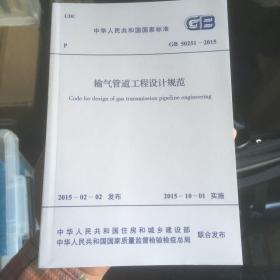
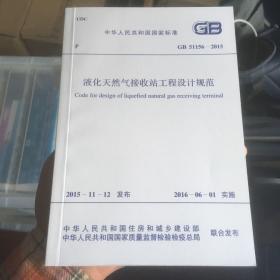
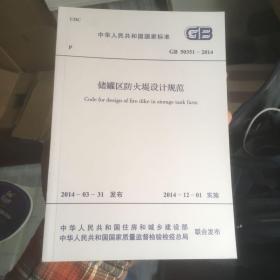


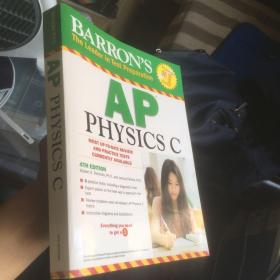



以下为对购买帮助不大的评价